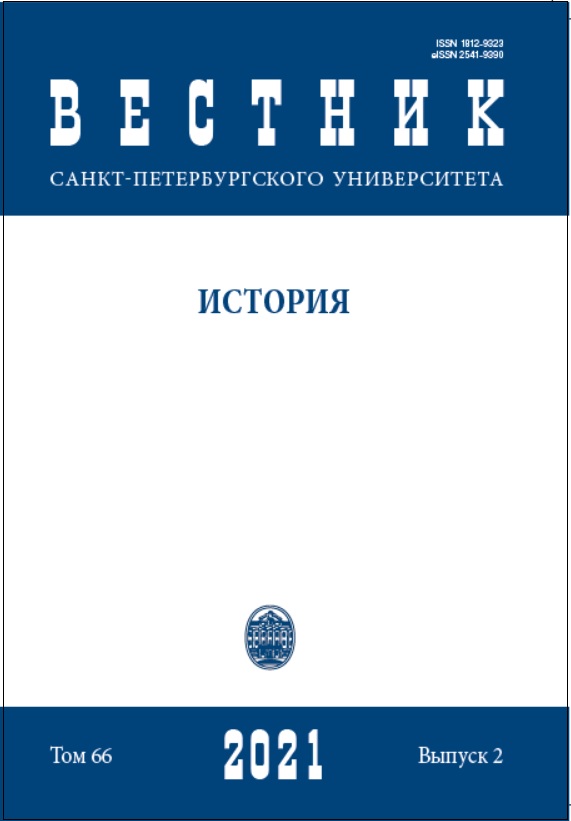Multisynchronous Settlement on the Turgay trough territory
DOI:
https://doi.org/10.21638/spbu02.2021.217Abstract
The collection of prehistoric material culture findings, obtained at Bestamak during stationary studies of 2001 field season, is put into scientific circulation. The archaeological site total area is 260,000 m². It was excavated by Turgay expedition in the 80s of the 20th century. Bestamak settlement is situated on the Turgay trough, connecting the West Siberian and Turan plains. In the west, the Turgay trough is bounded by the Trans-Ural Plateau; in the east – the Kazakh upland, spurring of the Ulutau mountains. Natural and geographical features of Turgay trough cites allow for their cultural layer to mainly contain multisynchronous material, Bestamak serving as an example. Because these, stone industry collections obtained on the monuments should be studied using technical and typological analysis, the main parameters of which being primary cleavage products; the plates’ morphological parameters and sizes, tools on the plates; percentage ratio of ingots and tools from plates and rock flakes; secondary processing methods; tool kit’ typological composition; raw materials composition being an independent indicator. In the course of research, the author concluded that the primary cleavage, nuclei “rejuvenation” and secondary processing of blanks were performed at the settlement. Judging by technical and typological analysis results, the stone industry was deposited from the Mesolithic finale to the Early Neolithic to the Late Eneolithic. The stone Neolithic industries, starting from the early and late Eneolithic, are predominant at Bestamak. The presence of Mesolithic and Early Eneolithic stone industries at the site is just an assumption. Fragments of ceramics and metal products suggest that people stayed at Bestamak until Late Bronze.
Keywords:
Neolithic period, Turgai trough, stone industry, technical and typological analysis, scrapers, knives, quartzite sandstone
Downloads
Downloads
Published
How to Cite
Issue
Section
License
Articles of "Vestnik of Saint Petersburg University. History" are open access distributed under the terms of the License Agreement with Saint Petersburg State University, which permits to the authors unrestricted distribution and self-archiving free of charge.





